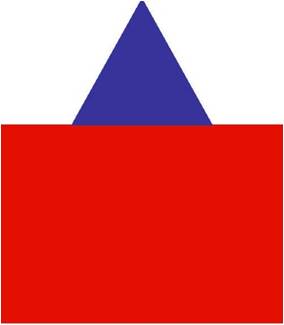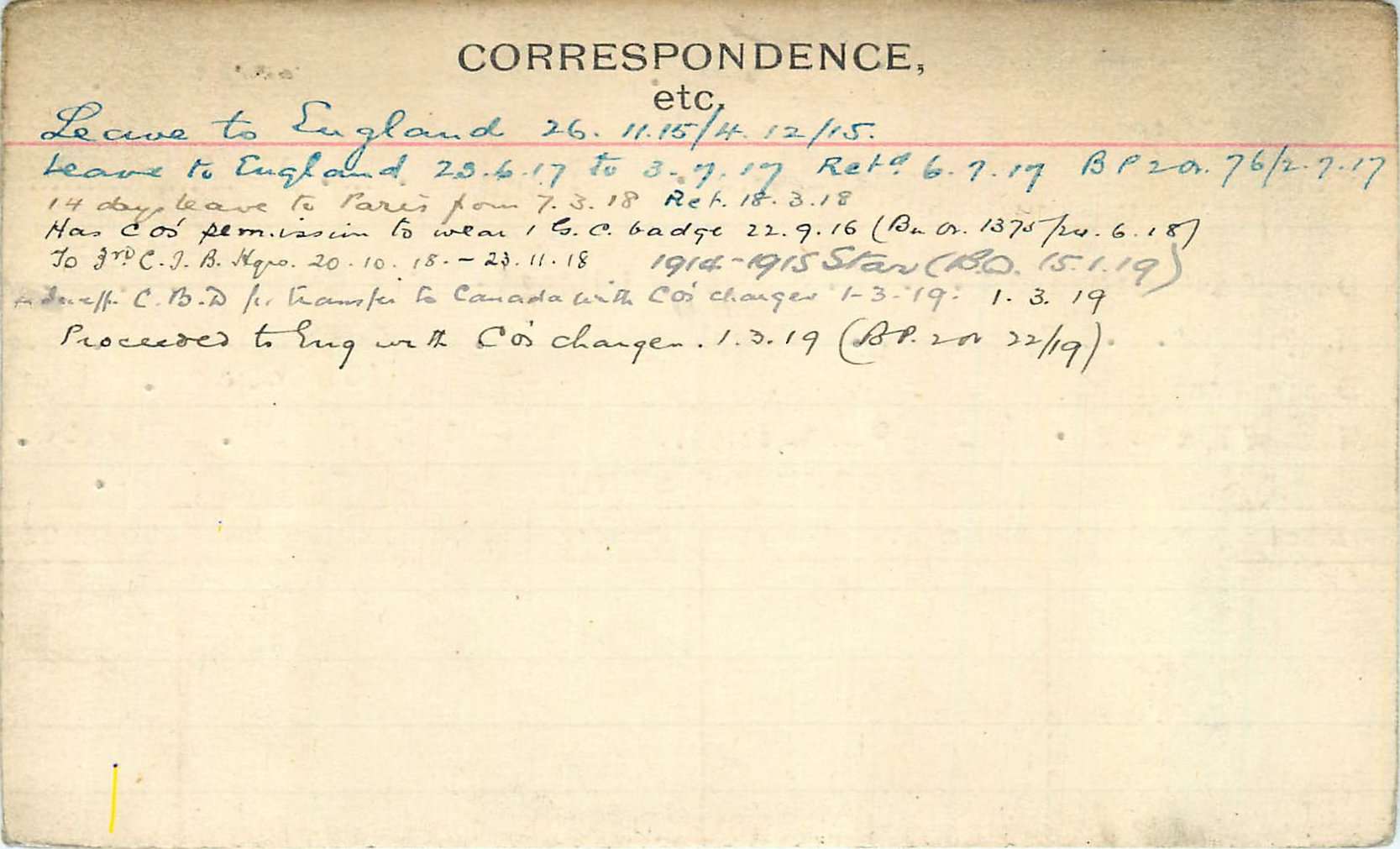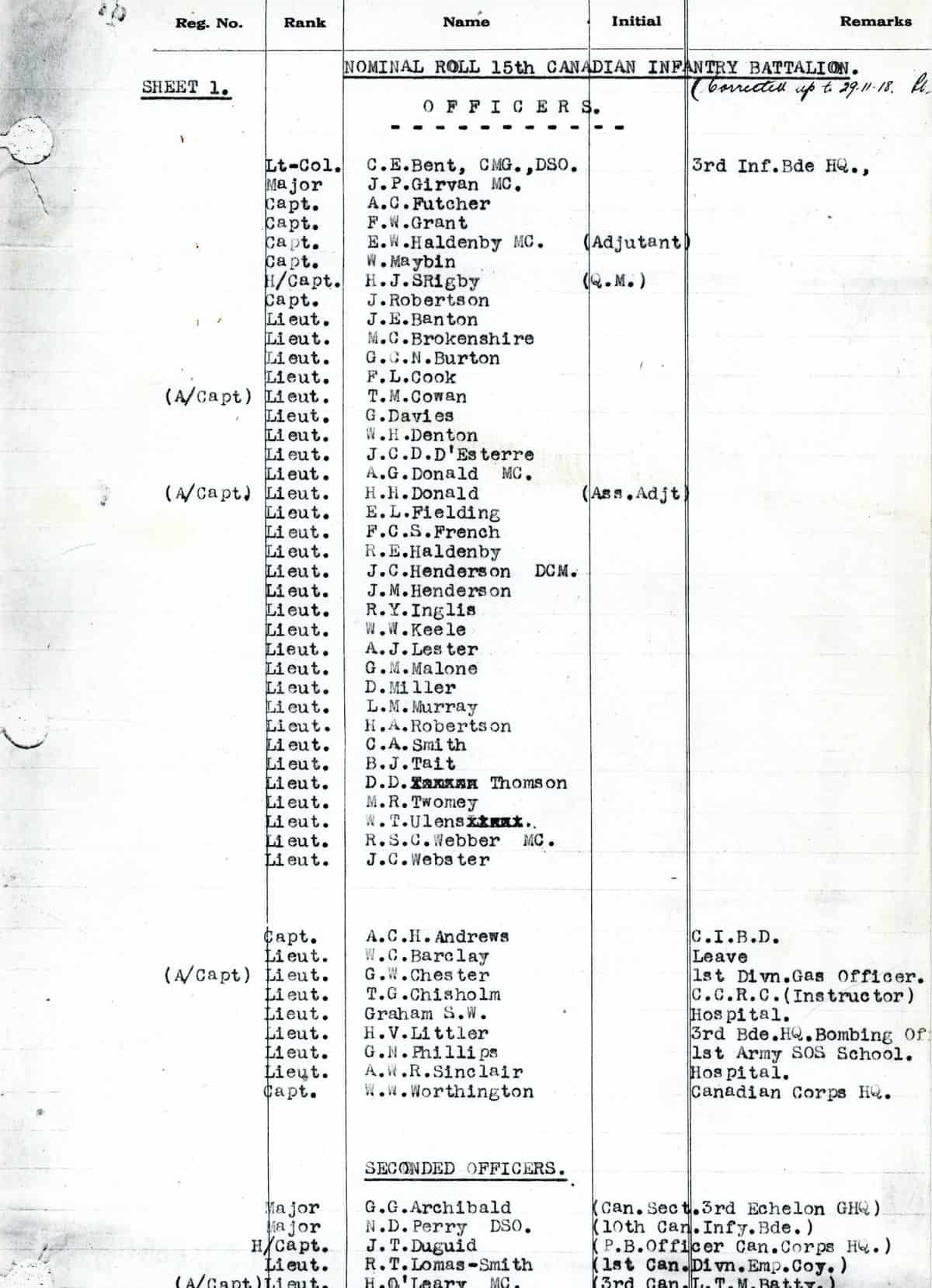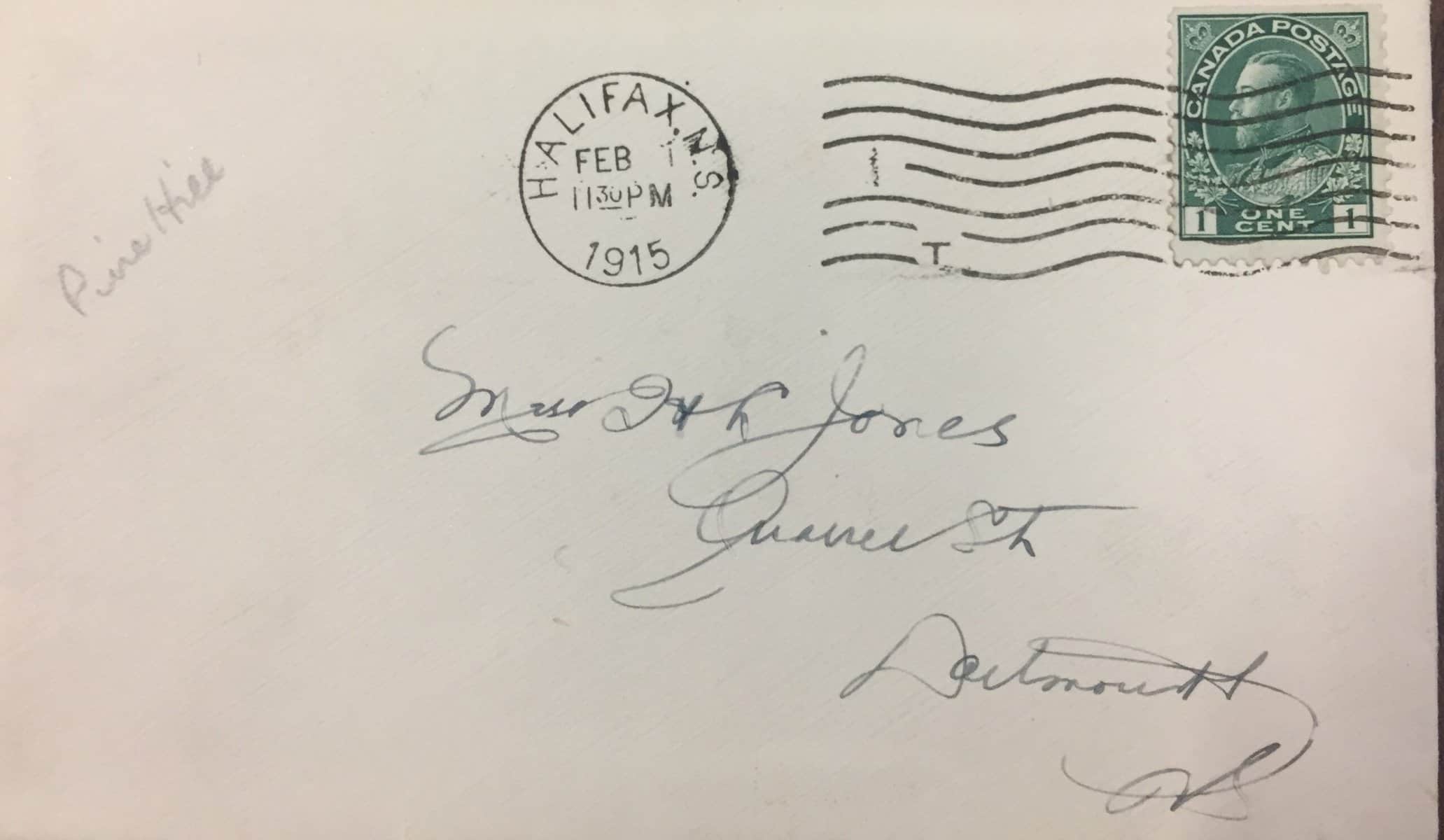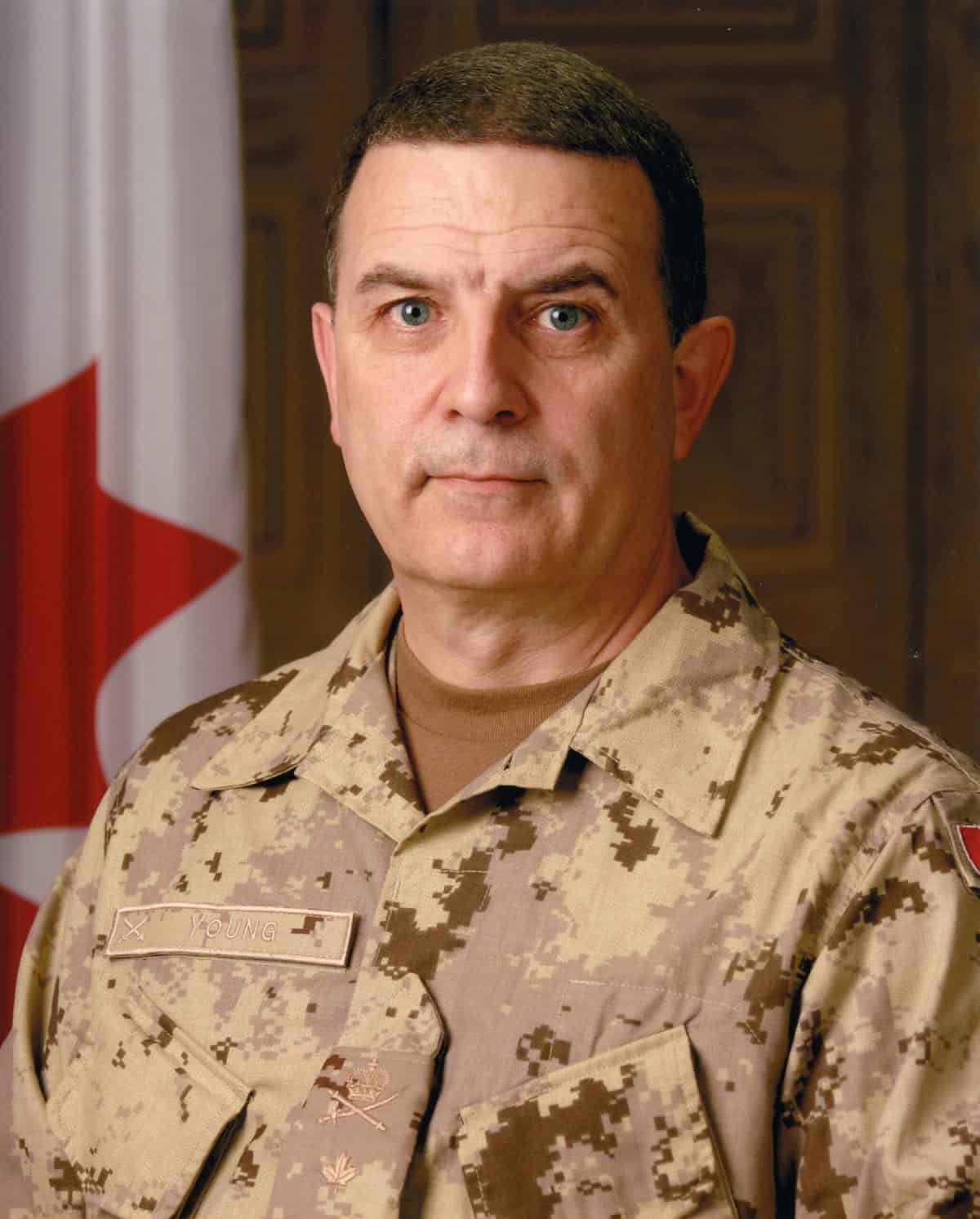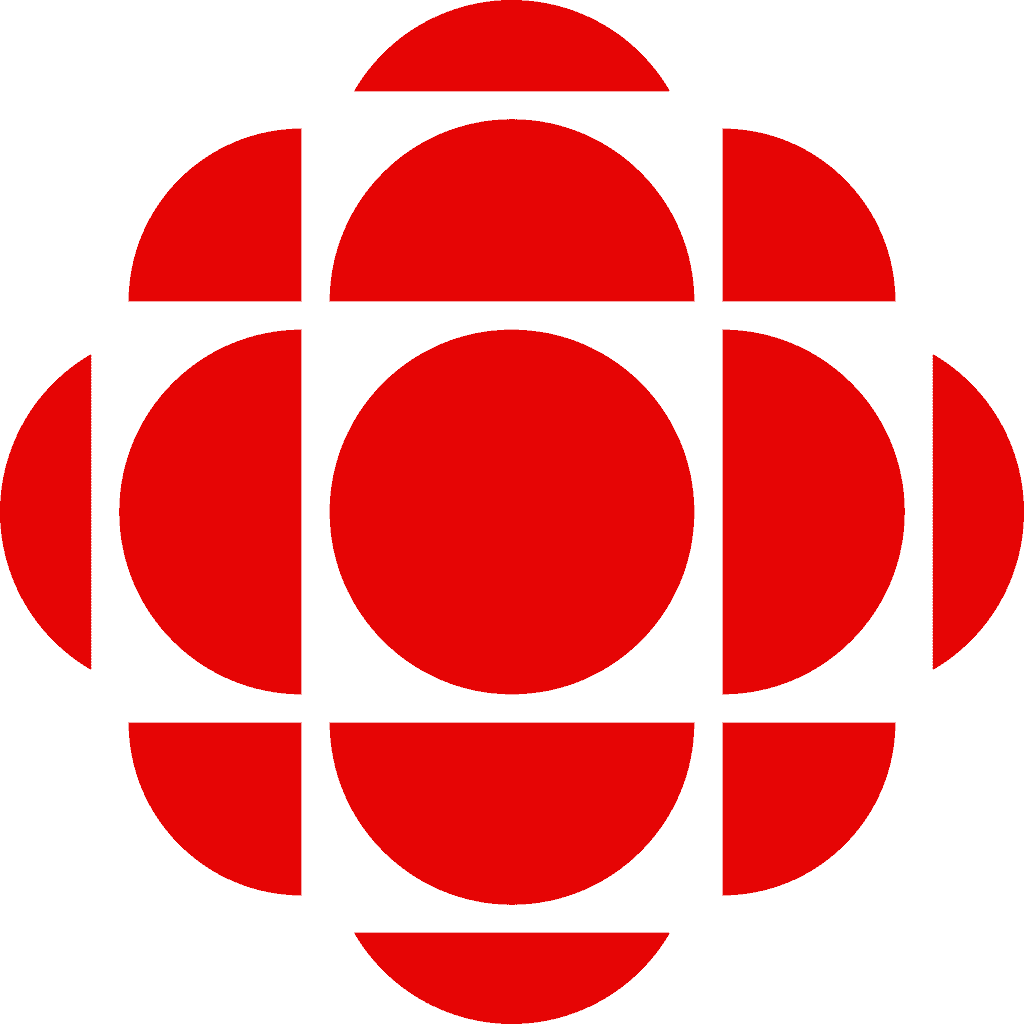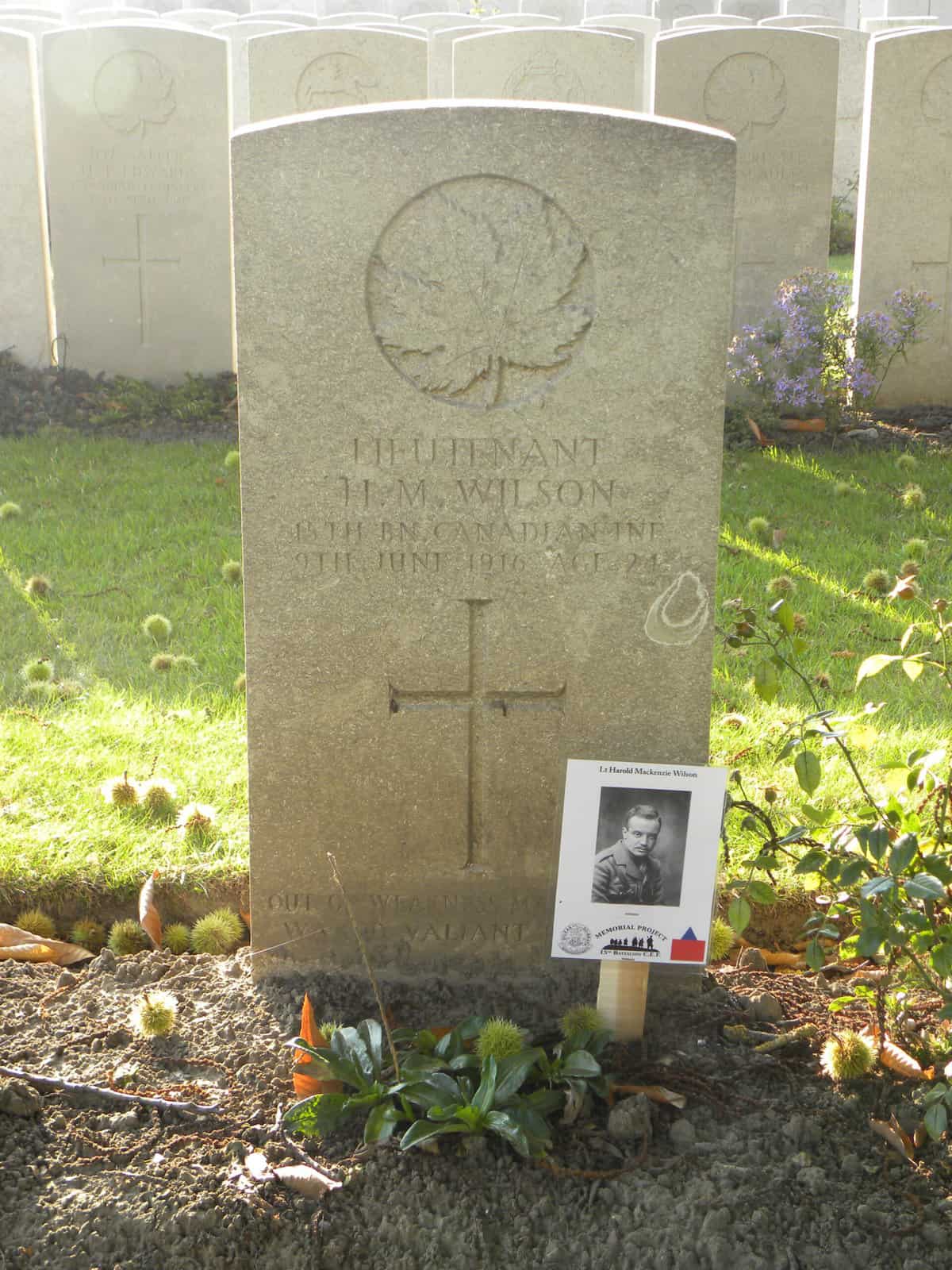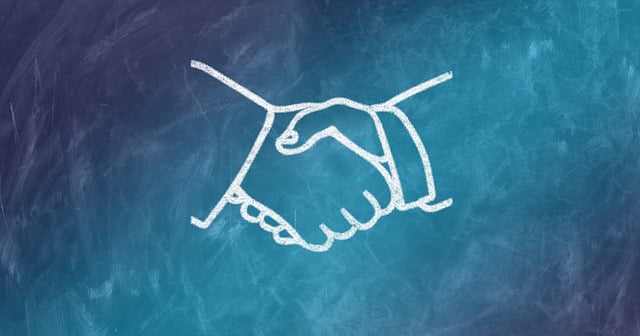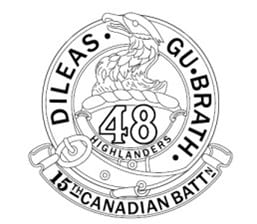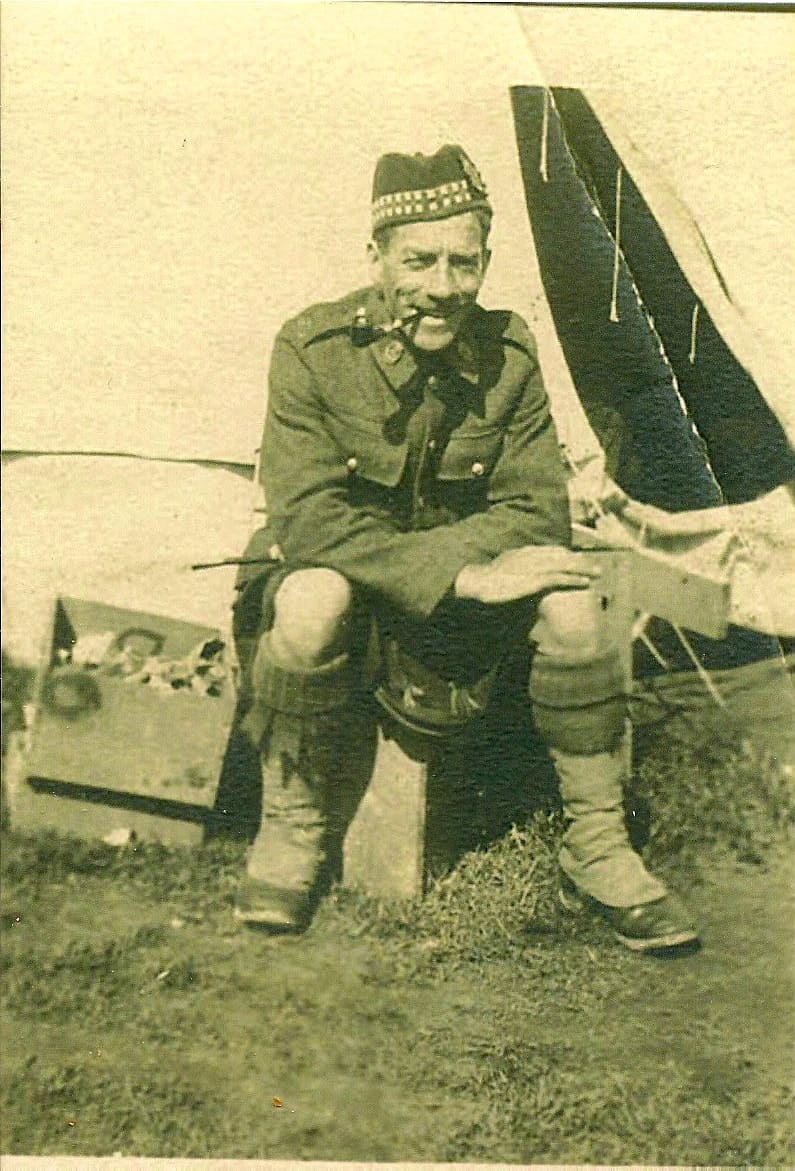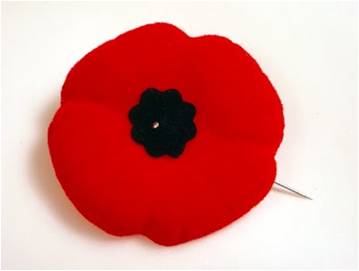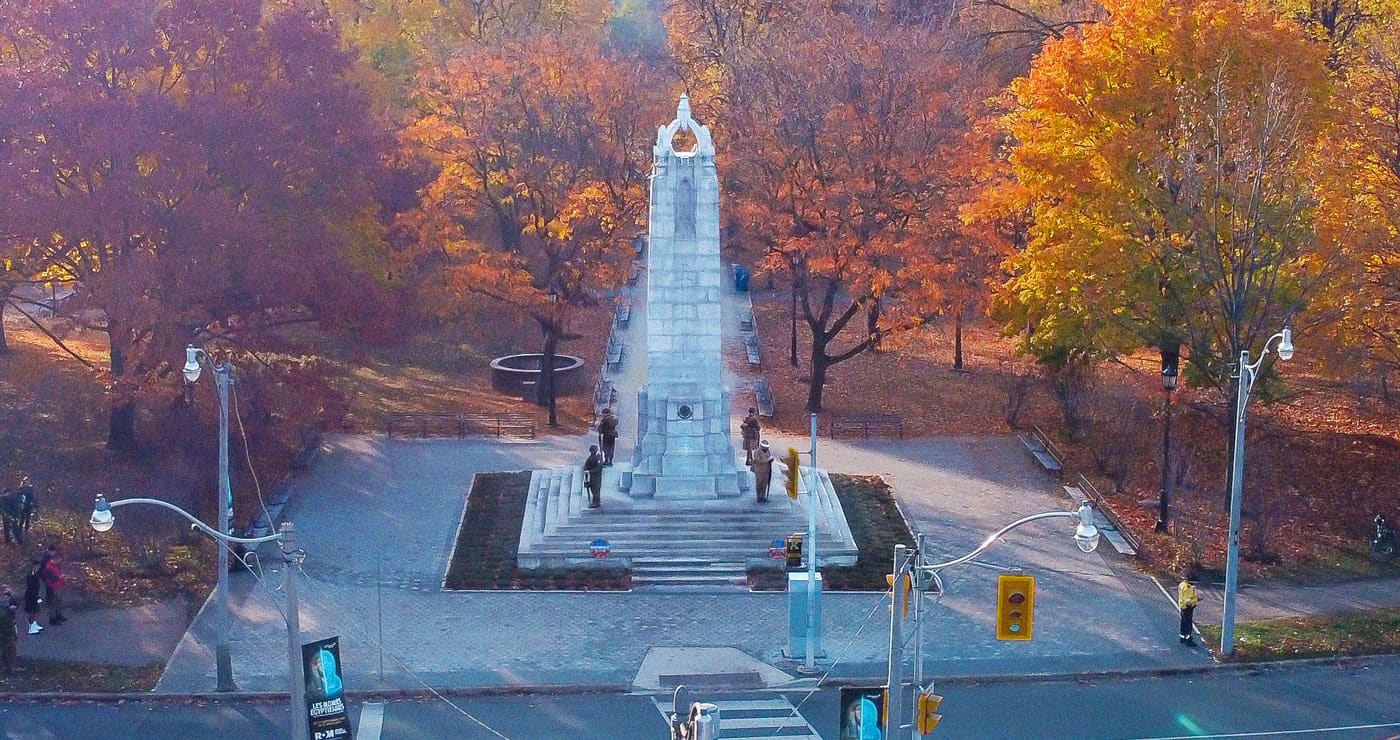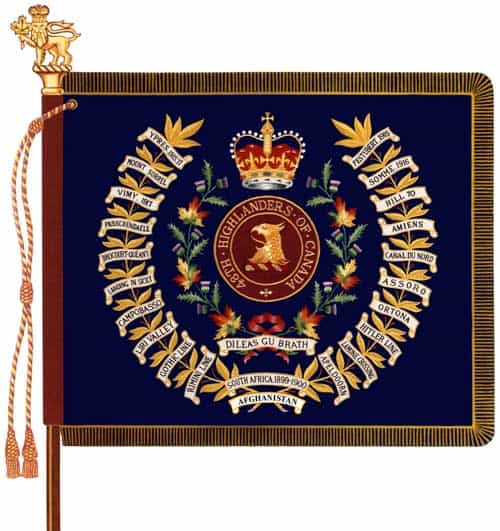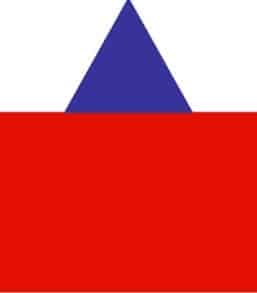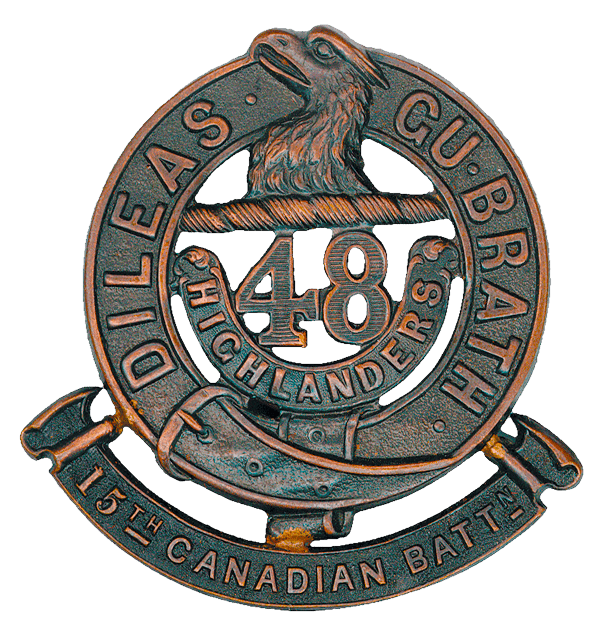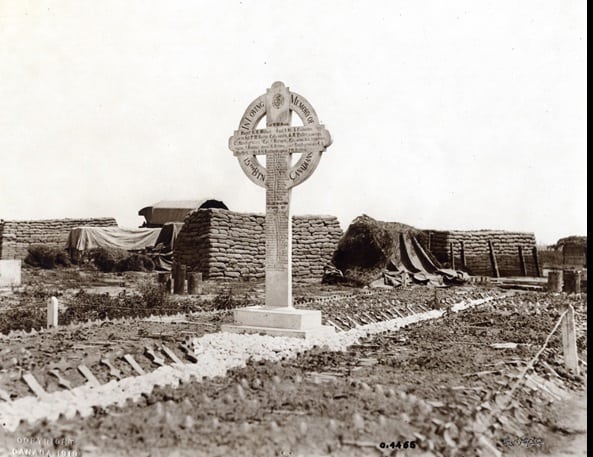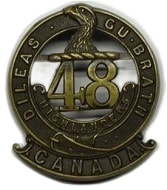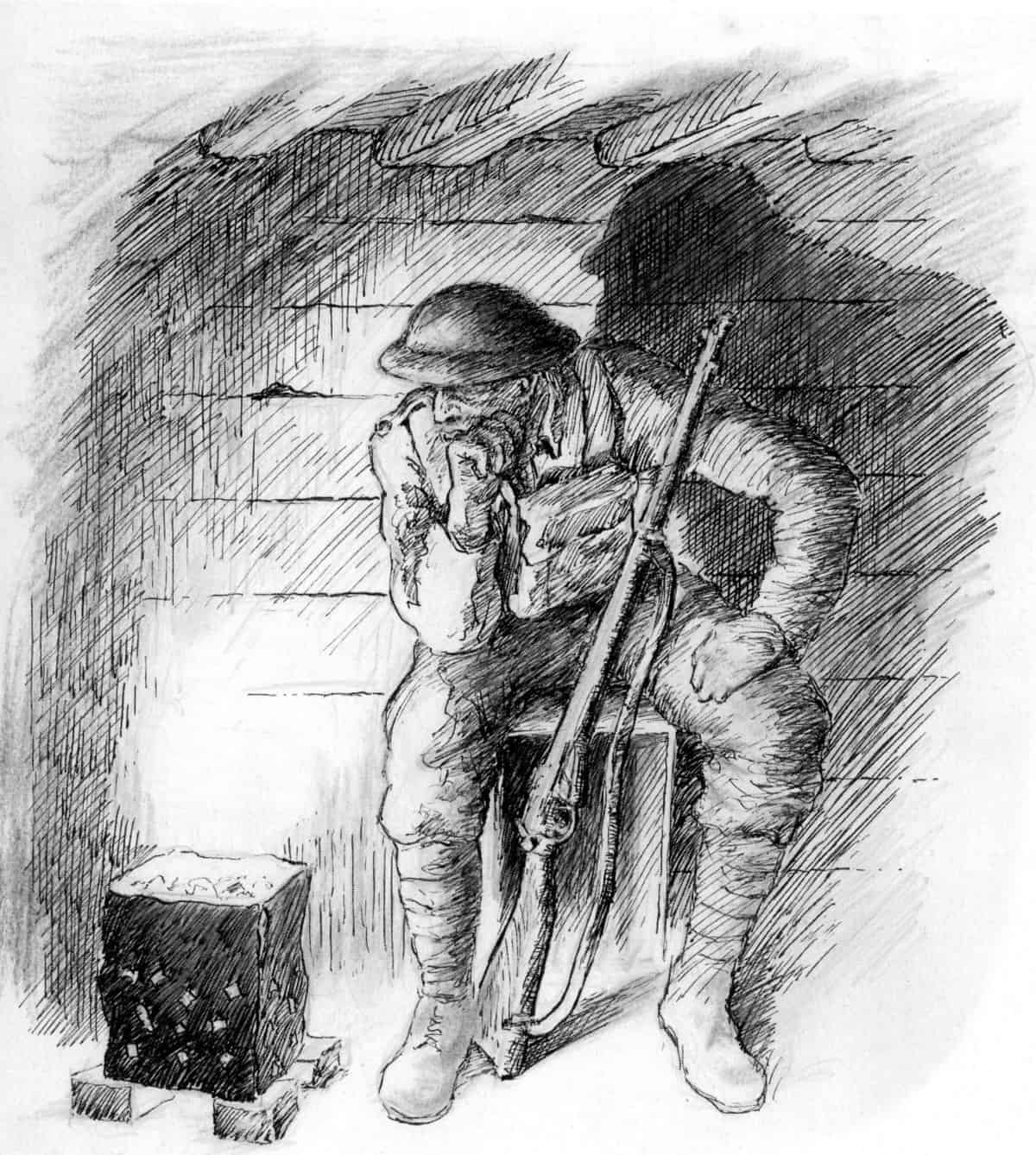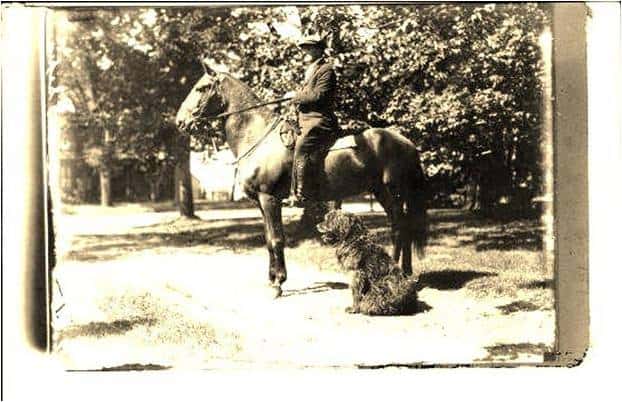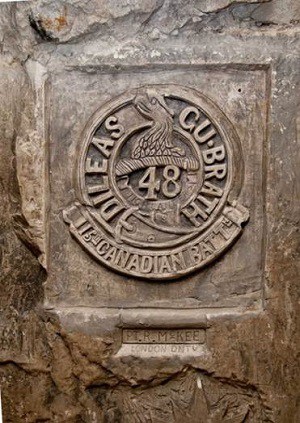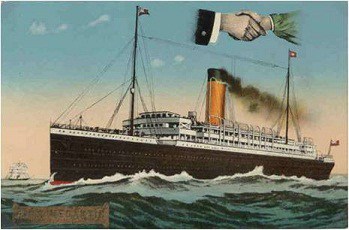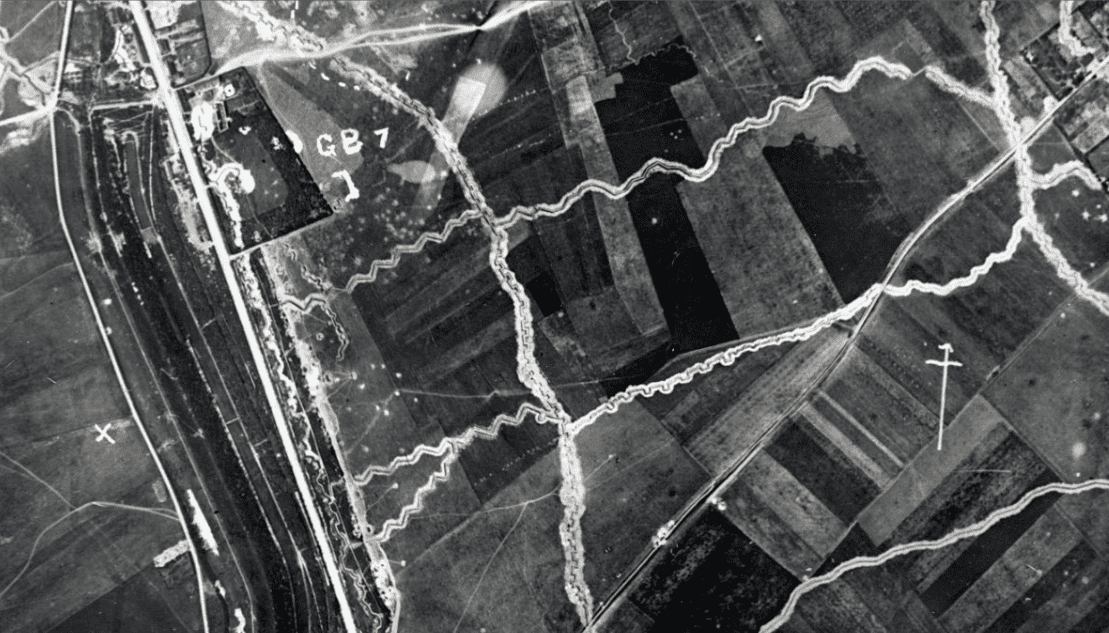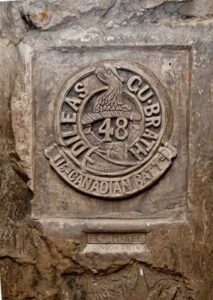Troops were rotated into the trenches, four days in and four days out, with weeks, and often months, passing between battles. During the day, time in the trenches was spent under cover, sheltering from the shelling by artillery. To occupy the long hours, the men made elaborate items, both decorative and functional, from shell casings, marble, chalk from Vimy Ridge and animal bones picked up from the battlefield.
Gallery
Most of the items in the gallery below were created by Lt John E. Banton. He was the unofficial artist of the 15th Battalion whose pencil sketches depicted life at the Front and in the trenches. These period sketches are preserved in the archives of the 48th Highlanders Regimental museum. The artist attested into the 92nd Battalion CEF on 14 Aug 1915 as Private John Erwin Banton. He was sent in a reinforcement draft to the 15th Battalion. No. 1 Company, No. 4 Platoon, Bombing section. He was commissioned from the rank of Corporal in early 1918 and finished the war as a Lieutenant with the 15th Battalion. His son, Major D. Banton, served with the 1st Bn 48th Highlanders during World War II.
Souterrain
There is a type of war art that is unique to the First World War: the carvings made by soldiers waiting in the many tunnels that were used to approach enemy lines. These tunnels are referred to as the “souterrain.” A number of carvings attributed to men of the 15th Battalion have been found in the Maison Blanche tunnels near Vimy and the tunnels near Loos.
Click the image to the right to learn more.

